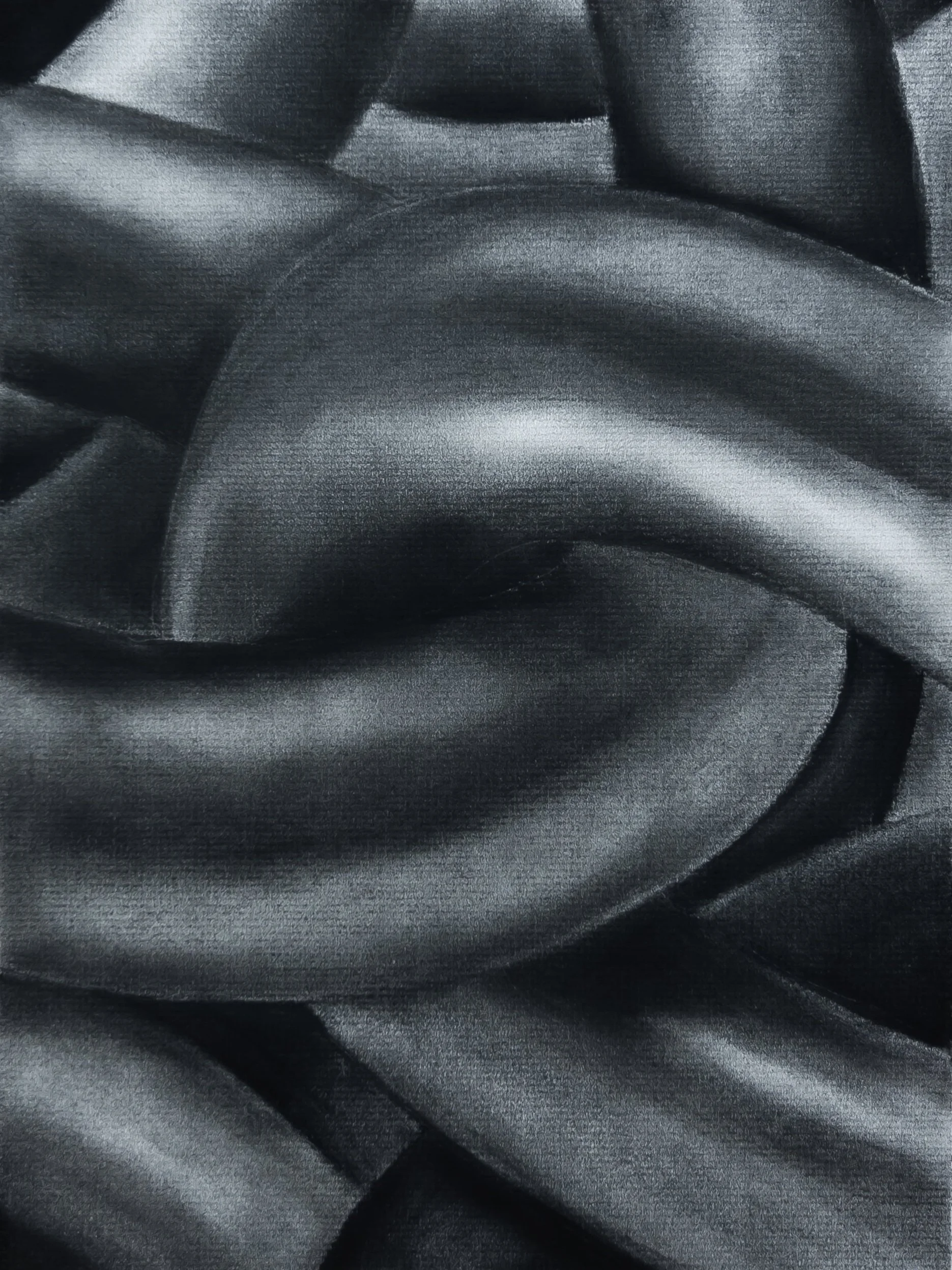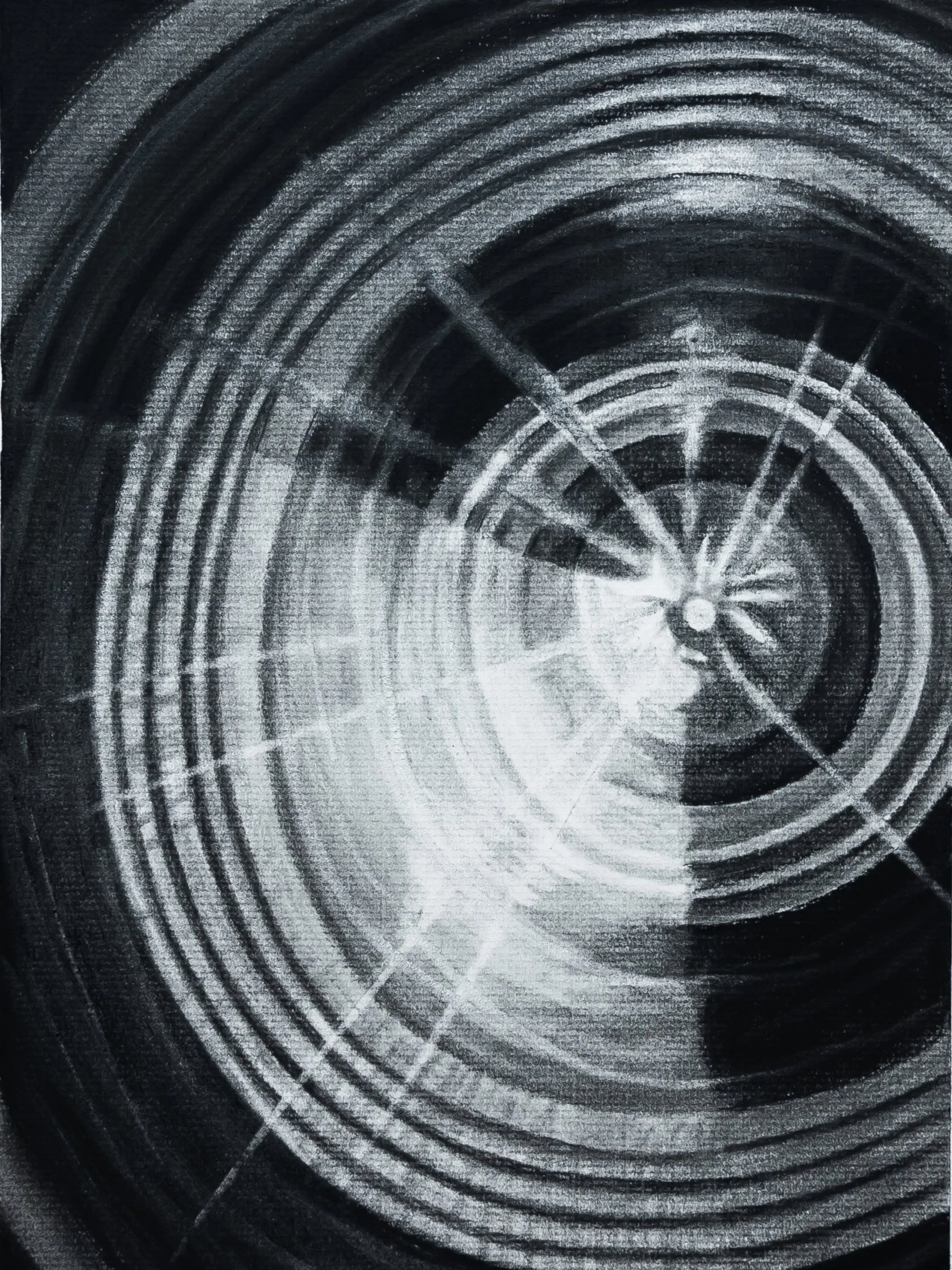Abstrahere
Abstrahere is a book created to embody the beliefs of my design philosophy. Abstrahere is a word derived from the Latin roots of the word “abstract.” The word abstract is to separate or withdraw something from something else. The beauty of abstraction often lies within the meaning that comes to life when works are pondered and deciphered. Although the visual solution and ability to create beautiful things is important, design is more so about the underlying meaning, concept, purpose, and process behind the work.
I translated the six main ideas of my philosophy into metaphorical objects that represent them. I created a series of drawings of abstracted versions of images of each object, and lastly combined them digitally into a single work that represents each point together—my philosophy in a single image.
Adobe Photoshop and Indesign, charcoal drawing. All photos are not mine and are for conceptual purposes only.
Layout design, Fine art (drawing), creative philosophy.
The Iceberg
Did you know that ninety percent of an iceberg is below the waterline? Only a mere ten percent is what we actually see. Likewise, design visuals are only a very small portion of what goes into completed works.
Design is all about the unseen. It is meaningful. It is not just about creating beautiful things, rather it is about why I design and what I am designing for. It is about its purpose. Why am I designing this? It is about concept. What ideas are driving the visual communication? It is about process. What steps am I taking and how do I get there?
The Chain
Design is collaborative. Like a chain, we must learn to work together to succeed in our careers and everyday lives. Working with fellow designers helps immensely with process, whether that be conversing to bounce ideas off one another, thinking through the process, or getting feedback.
Design collaboration will often require different people with different skill sets come together to share an entire workload of a project with an aim to achieve better results with profound impacts. It is important to know that I will not always be working with fellow designers, but I will likely be working with people in other areas as well. Collaborative skills are important ones to have in general, but they are especially important when it comes to understanding the skill sets of others I may work with.
The Dance
Two steps forward, one step back. Design is like a dance, it has movement. Deceiving as it may seem, steps back lead to steps forward.
It is necessary to take steps back and to look at projects in their entirety throughout the design process. Most of the time, that means backtracking and discovering more in order to fill in any missing pieces that might help determine visual answers.
The Lens
Design alters the way in which I view the world around me. Like putting on a pair of glasses for the first time and seeing the world through a new lens, pursuing design allowed me to unveil an entire world in which I had never entered into before. It allows me to see and understand things in a different way than I have ever experienced.
“Designers have to learn to self-confidence to define, redefine, and change the problem-as-given in the light of the solution that emerges from their minds and hands. People who seek the certainty of externally structured, well-defined problems will never appreciate the delight of being a designer.”
(Nigel Cross, Designerly Ways of Knowing)
It was not until I stepped into the world of design that I realized the true power within it, not only because of the impact it has through voice, but because of the way it has completely altered the way I think and do.
The Novel
Design can be personal and driven by my story. Experiences drive decision making. As a result, it is important to understand the story that I am writing through my design choices. Whether it be the story of the people I am serving, the purpose of the work, or my story and experiences influencing design decisions, novels are everywhere throughout the process.
In addition, the process of design also influences and writes a story on my personal experiences outside of the design realm. Through story, design allows me to speak where words are feared and encourages me to be both fearless and intuitive in my decision making.
The Map
Design is like traveling across the map. Suppose you give hundreds of people the opportunity to pick any place in the world to travel to. What is the likelihood that all of them will choose the exact same destination, exact same hotel, exact same list of activities, and so on? Probably slim to none.
Give hundreds of designers the same design opportunity to solve, and the scenario ends the same as the one explained above. Just like traveling, we as designers will all create different solutions, as well as our means of getting there. No process is the exact same, no solution is the exact same. This is the beauty of art and design. Each solution is unique, all driven by the designer’s process, purpose, concept, and ideas.
The Compilation
The final work of my design philosophy series is a compilation of all six of my previous drawings in one. The work was created to embody my philosophy as a whole. It represents all six points coming together as an abstract form.
While each individual point is equally important, the way in which they combine and interact with one another is what brings everything together. The final work was like putting together the pieces of a puzzle to reveal the answer.
The beauty I found in creating this compiled piece was the unknown outcome of the work. It became a perfect example of exactly what my philosophy is all about. Everything behind the scenes of the works drove their solutions, and the final piece was how they interact. The work was derived from purpose, concept, and process.












